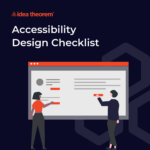In today’s rapidly evolving market landscape, the success of businesses hinges on their ability to deeply understand their customers’ needs and preferences. Moreover, user research stands as a crucial pillar in this pursuit, shaping products and services that resonate with their target audience. Furthermore, to embark on product development without user research is akin to shooting an arrow without aiming for the bullseye—it’s a blind endeavor fraught with uncertainties. Now, let’s delve into the essence of user research and its transformative impact on product strategies.
Understanding User Research
User research serves as a compass guiding product designers and owners towards creating offerings that users not only adopt but also cherish. It’s a systematic inquiry into the behaviors, preferences, and pain points of the target audience. By dispelling assumptions and embracing empirical insights, user research informs every phase of the product lifecycle, from conception to delivery.
The Role of User Researchers
User researchers play a pivotal role in this journey, serving as conduits between the design team and the end-users. Additionally, their responsibilities encompass deciphering user personas, unraveling their challenges, and iteratively testing solutions. By employing a blend of qualitative and quantitative methodologies, user researchers illuminate the path towards user-centric design, ensuring that products and services resonate effectively with their intended audience.
Exploring User Research Methodologies:

1. Attitudinal and Behavioral
Attitudinal research probes into users’ sentiments and emotions towards a product or service. Moreover, focus groups and surveys serve as potent tools in unraveling these subjective dimensions.
Behavioral research, on the other hand, scrutinizes users’ actions and interactions with the product. A/B testing and eye-tracking unveil invaluable insights into user navigation patterns and preferences.
2. Quantitative and Qualitative
Quantitative research quantifies user behaviors and preferences through measurable metrics. Surveys and analytics, in particular, furnish data-driven insights, shedding light on user engagement and satisfaction levels. These methodologies provide concrete data points that allow designers to make informed decisions and optimize user experiences effectively.
Qualitative research delves into the underlying motivations and rationales behind user actions. Moreover, through in-depth interviews and observational studies, designers glean nuanced understandings of user needs and pain points. These qualitative methodologies offer rich insights into the human aspect of user behavior, complementing quantitative data and providing a comprehensive understanding of the user experience.
3. Context of Use
- Natural studies observe users’ organic interactions with a product in their everyday environments.
- Scripted studies impose specific scenarios or tasks to evaluate users’ responses systematically.
- Not using the product studies simulate users’ first encounters with a product, gauging initial impressions and hurdles.
- Hybrid studies amalgamate diverse contexts to extract comprehensive insights into user behaviors and preferences.
Essential User Research Method
- Interviews facilitate deep dives into user perspectives, unraveling insights that shape product strategies.
- Surveys provide scalable avenues for gathering user feedback and preferences.
- Focus groups foster rich discussions, offering diverse perspectives on product usability and desirability.
- Eye tracking and heat mapping offer granular insights into user interactions, informing interface optimizations.
- Participatory design empowers stakeholders to co-create solutions aligned with their needs and aspirations.
- A/B testing and usability testing offer empirical validations of design hypotheses, refining products iteratively.
- Ethnographic studies immerse researchers in users’ natural habitats, unveiling contextual nuances that shape product experiences.
- Analytics platforms offer real-time insights into user behaviors, guiding data-informed decisions.
The Timing of User Research

User research is not confined to a specific phase of the project; rather, it permeates every stage of the product lifecycle. Whether ideating, prototyping, or refining, user research serves as a guiding beacon, ensuring that products resonate with their intended audience.
In conclusion, user research isn’t merely an accessory in modern product development—it’s the bedrock upon which successful products are built. By embracing user-centric methodologies and harnessing empirical insights, businesses can navigate the competitive landscape with confidence, delivering solutions that captivate and delight their users
What’s Next
Idea Theorem is a top UI UX Research and Design agency based in North America. Through our empathy-driven approach, we have crafted digital products that have positively impacted over 10 million users. Our mission is to shape the digital future by delivering exceptional experiences. Contact Us if you have any questions; we will gladly help you.
—






